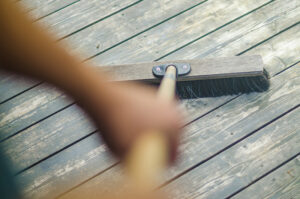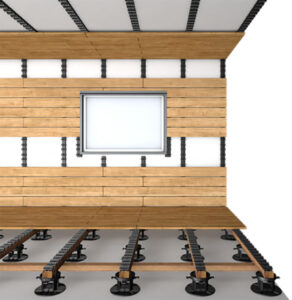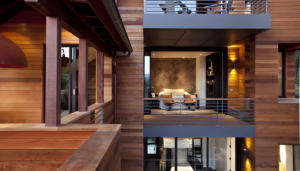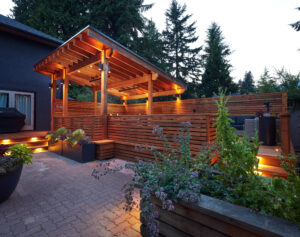When homeowners consider their place’s curb appeal – how attractive it looks from the street – they often think about exterior paint colors and landscaping. But more and more, they’re leveraging wooden touches to connect their home to its place in the Northwest. This is particularly true among houses built from the 1950s through the 1980s – the properties most frequently changing hands right now in the hot Seattle market, says Stacy Kovats, who directs marketing at century-old Issaquah Cedar in Issaquah, a retailer and manufacturer working with cedar, pine and many exotic hardwoods. Buyers of homes from this era want to update exteriors to put a personal spin or new look on their property, while homeowners seek to modernize their exterior for both the potential financial gain and pure aesthetics. Here are five ways Kovats says homeowners can use wood to bolster a home’s curb appeal.
Fences and “screens”
A wooden “screen” – a wall of wood composed of horizontal slats – can add visual variety, shade and privacy. Screens can conceal a front patio or create a sight barrier between closely adjoined or narrow urban lots. They also can provide a backdrop or installation point for strategic outdoor lighting. Wooden screens juxtaposed with cement, brick, pavers or pea gravel can introduce a mix of textures to an outdoor room, creating visual interest.

Strategic siding
Adding accent siding to a home – on one or multiple sides of the home, a full wall or partial wall – is another popular way to spruce up its appeal and add design diversity. Homeowners are using cedar shiplap, tongue-and-groove or barn wood (rustic cedar planks) to create visual impact.

Accent pieces
Often it’s the little details that make a house look intentional. Homeowners are choosing wood to make practical elements into aesthetically pleasing details. Examples include choosing wood for garbage receptacle enclosures, planter boxes and mailboxes. Wooden furniture on a front patio or porch – such as Adirondack chairs, benches or occasional tables – can also play off other wooden touches chosen by a homeowner.

Walkways and entries
“Homeowners like to buy a new front door, or paint their existing one, to make their entry pop,” Kovats notes. “But what’s around it? If the rest of the entry is dated, there’s more work to do.” Homes with older cement steps can benefit from full or partial replacement with wooden decking, and decking can be used to add intrigue around an entryway. Wooden gates and arbors along the sidewalk in front of a home also add an element of mystery and coziness along the border between the property and public space.

Live-edge benches and furniture
“Live edge” wooden slabs, whose edges have imperfections and variations in keeping with the tree they came from, rather than planed and smooth edges, are a visually dramatic and authentic design touch which many homeowners are choosing indoors and out. On the exterior, live-edge wood is a popular choice for benches or ledges.








